Black And Decker QS900 Handleiding
Bekijk gratis de handleiding van Black And Decker QS900 (6 pagina’s), behorend tot de categorie Schuurmachine. Deze gids werd als nuttig beoordeeld door 55 mensen en kreeg gemiddeld 4.8 sterren uit 28 reviews. Heb je een vraag over Black And Decker QS900 of wil je andere gebruikers van dit product iets vragen? Stel een vraag
Pagina 1/6

General Safety Rules
WARNING: Read all safety warnings and all instructions. Failure to follow the warnings
and instructions may result in electric shock, fire and/or serious injury.
SAVE ALL WARNINGS AND INSTRUCTIONS FOR FUTURE REFERENCE
The term “power tool” in the warnings refers to your mains-operated (corded) power tool or
battery-operated (cordless) power tool.
1) WORK AREA SAFETY
a) Keep work area clean and well lit. Cluttered or dark areas invite accidents.
b) Do not operate power tools in explosive atmospheres, such as in the presence
of ammable liquids, gases or dust. Power tools create sparks which may ignite the
dust or fumes.
c) Keep children and bystanders away while operating a power tool. Distractions can
cause you to lose control.
2) ELECTRICAL SAFETY
a) Power tool plugs must match the outlet. Never modify the plug in any way. Do not
use any adapter plugs with earthed (grounded) power tools. Unmodified plugs and
matching outlets will reduce risk of electric shock.
b) Avoid body contact with earthed or grounded surfaces such as pipes, radiators,
ranges and refrigerators. There is an increased risk of electric shock if your body is
earthed or grounded.
c) Do not expose power tools to rain or wet conditions. Water entering a power tool
will increase the risk of electric shock.
d) Do not abuse the cord. Never use the cord for carrying, pulling or unplugging
the power tool. Keep cord away from heat, oil, sharp edges or moving parts.
Damaged or entangled cords increase the risk of electric shock.
e) - When operating a power tool outdoors, use an extension cord suitable for out
door use. Use of a cord suitable for outdoor use reduces the risk of electric shock.
f) If operating a power tool in a damp location is unavoidable, use a ground fault circuit
interrupter (GFCI) protected supply. Use of a GFCI reduces the risk of electric shock.
3) PERSONAL SAFETY
a) Stay alert, watch what you are doing and use common sense when operating a
power tool. Do not use a power tool while you are tired or under the inuence of
drugs, alcohol or medication. A moment of inattention while operating power tools
may result in serious personal injury.
b) Use personal protective equipment. Always wear eye protection. Protective equip-
ment such as dust mask, nonskid safety shoes, hard hat, or hearing protection used for
appropriate conditions will reduce personal injuries.
c) Prevent unintentional starting. Ensure the switch is in the off position before
connecting to power source and/ or battery pack, picking up or carrying the tool.
Carrying power tools with your finger on the switch or energizing power tools that have
the switch on invites accidents.
d) Remove any adjusting key or wrench before turning the power tool on. A wrench or
a key left attached to a rotating part of the power tool may result in personal injury.
e) Do not overreach. Keep proper footing and balance at all times. This enables better
control of the power tool in unexpected situations.
f) Dress properly. Do not wear loose clothing or jewelry. Keep your hair, clothing
and gloves away from moving parts. Loose clothes, jewelry or long hair can be
caught in moving parts.
g) If devices are provided for the connection of dust extraction and collection
facilities, ensure these are connected and properly used. Use of dust collection can
reduce dust-related hazards.
4) POWER TOOL USE AND CARE
a) Do not force the power tool. Use the correct power tool for your application. The
correct power tool will do the job better and safer at the rate for which it was designed.
b) Do not use the power tool if the switch does not turn it on and off. Any power tool
that cannot be controlled with the switch is dangerous and must be repaired.
c) Disconnect the plug from the power source and/or the battery pack from the power
tool before making any adjustments, changing accessories, or storing power tools.
Such preventive safety measures reduce the risk of starting the power tool accidentally.
d) - Store idle power tools out of the reach of children and do not allow persons unfa
miliar with the power tool or these instructions to operate the power tool. Power
tools are dangerous in the hands of untrained users.
e) - Maintain power tools. Check for misalignment or binding of moving parts, break
age of parts and any other condition that may affect the power tool’s operation.
If damaged, have the power tool repaired before use. Many accidents are caused
by poorly maintained power tools.
f) Keep cutting tools sharp and clean. Properly maintained cutting tools with sharp cut-
ting edges are less likely to bind and are easier to control.
g) Use the power tool, accessories and tool bits, etc. in accordance with these
instructions, taking into account the working conditions and the work to be per-
formed. Use of the power tool for operations different from those intended could result
in a hazardous situation.
5) BATTERY TOOL USE AND CARE
a) Recharge only with the charger specied by the manufacturer. A charger that is suitable
for one type of battery pack may create a risk of fire when used with another battery pack.
b) Use power tools only with specically designated battery packs. Use of any other
battery packs may create a risk of injury and fire.
c) When battery pack is not in use, keep it away from other metal objects like paper
clips, coins, keys, nails, screws, or other small metal objects that can make a
connection from one terminal to another. Shorting the battery terminals together
may cause burns or a fire.
d) Under abusive conditions, liquid may be ejected from the battery, avoid contact. If
contact accidentally occurs, ush with water. If liquid contacts eyes, additionally
seek medical help. Liquid ejected from the battery may cause irritation or burns.
6) SERVICE
a) Have your power tool serviced by a qualied repair person using only identical
replacement parts. This will ensure that the safety of the power tool is maintained.
SPECIFIC SAFETY RULES
Hold tool by insulated gripping surfaces when performing an operation where the
cutting tool may contact hidden wiring or its own cord. Contact with a “live” wire will
also make exposed metal parts of the tool “live” and shock the operator.
WARNING: ALWAYS use safety glasses. Everyday eye glasses are NOT safety
glasses. Also use face or dust mask if operation is dusty. ALWAYS WEAR
CERTIFIED SAFETY EQUIPMENT:
•ANSI Z87.1 eye protection (CAN/CSA Z94.3)
•ANSI S12.6 (S3.19) hearing protection
•NIOSH/OSHA/MSHA respiratory protection
Sanding of lead-based paint is not recommended. Sanding Lead Based Paint See for
additional information before sanding paint.
Extension Cords
When using an extension cord, be sure to use one heavy enough to carry the current your
product will draw. An undersized cord will cause a drop in line voltage resulting in loss of
power and overheating. The following table shows the correct size to use depending on cord
length and nameplate ampere rating. If in doubt, use the next heavier gage. The smaller the
gage number, the heavier the cord.
The label on your tool may include the following symbols.
V amperes ...........................volts A .........................
Hz watts ......................... hertz W ........................
min minutes ........................ .......................alternating current
......................direct current no ....................... no load speed
..........................Class II Construction ........................ earthing terminal
.........................safety alert symbol .../min revolutions or ..................
reciprocations per minute
WARNING: Some dust created by power sanding, sawing, grinding, drilling, and
other construction activities contains chemicals known to the State of California to
cause cancer, birth defects or other reproductive harm. Some examples of these
chemicals are:
Your risk from these exposures varies, depending on how often you do this type of
work. To reduce your exposure to these chemicals: work in a well ventilated area, and
work with approved safety equipment, such as those dust masks that are specially
designed to filter out microscopic particles.
Avoid prolonged contact with dust from power sanding, sawing, grinding, drilling,
and other construction activities. Wear protective clothing and wash exposed areas
with soap and water. Allowing dust to get into your mouth, eyes, or lay on the skin may
promote absorption of harmful chemicals.
WARNING: Use of this tool can generate and/or disburse dust, which may cause
serious and permanent respiratory or other injury. Always use NIOSH/OSHA approved
respiratory protection appropriate for the dust exposure. Direct particles away from face and
body.
INSTRUCTION MANUAL
Catalog Number QS900
KEY INFORMATION YOU SHOULD KNOW:
VEA EL ESPA—OL EN LA CONTRAPORTADA.
SAVE THIS MANUAL FOR FUTURE REFERENCE.
ADVERTENCIA:
Catalog Number QS900 FORM NO. 90590031 JUNE ‘12
Copyright © 2012 Black & Decker Printed in China
PALM GRIP SANDER
BEFORE RETURNING THIS PRODUCT
FOR ANY REASON PLEASE CALL
1-800-544-6986
o .
BLACK & DECKER
T B & D !hank you for choosing lack ecker
go To www lackanD ecker com ew wner .B D . /n o
To regisTer your new proDucT .
Minimum Gage for Cord Sets
Volts Total Length of Cord in Feet
Ampere Rating
Than Than
Functional Description
1. On/Off Switch
1
2
3
4
5
A
SAFETY GUIDELINES - DEFINITIONS
It is important for you to read and understand this manual. The information it contains
are used to help you recognize this information.
DANGER: Indicates an imminently hazardous situation which, if not avoided, will result
in death or serious injury.
WARNING: Indicates a potentially hazardous situation which, if not avoided,
could result in death or serious injury.
CAUTION: Indicates a potentially haz ard ous situation which, if not avoided, may
result in minor or mod er ate injury.
NOTICE: Used without the safety alert symbol indicates potentially hazardous
situation which, if not avoided, may result in property damage.

DUST CANISTER
:Attaching and removing
rear and off the outlet (Figure E).
Emptying:
Remove canister and
shake out debris over a trash can.
HINTS FOR OPTIMUM USE
Do not place your hands over the ventilation slots.
Do not exert too much pressure on the tool.
Regularly check the condition of the sanding sheet. Replace when necessary.
Always sand with the grain of the wood.
When sanding new layers of paint before applying another layer, use extra fine grit.
On very uneven surfaces, or when removing layers of paint, start with a coarse grit. On
other surfaces, start with a medium grit. In both cases, gradually change to a fine grit for a
smooth finish.
CAUTION: Respiratory hazard. for wood sanding Never operate this tool unless the
dust canister is in place. Sanding dust exhaust may create a breathing hazard.
WARNING: Fire hazard. Collected sanding dust from sanding surface coatings (polyure
To reduce risk, empty canister frequently and strictly follow sander manual and coating man
ufacturer’s instructions.
WARNING: Fire hazard. When working on metal surfaces, do not use the dust canister
because sparks are generated. Wear safety glasses and a dust mask. Due to the danger
of
fire, do not use your sander to sand magnesium surfaces. Do not use for wet sanding.
MAINTENANCE
Use only mild soap and damp cloth to clean the tool. Never let any liquid get inside the tool;
never immerse any part of the tool into a liquid.
IMPORTANT:
adjustment should be performed by authorized service centers or other qualified service
organizations, always using identical replacement parts.
ACCESSORIES
Recommended accessories for use with your tool are available from your local dealer or
authorized service center. If you need assistance regarding accessories, please call:
1-800-544-6986.
WARNING: The use of any accessory not recommended for use with this tool could be
hazardous.
Service Information
with efficient and reliable power tool service. Whether you need technical advice, repair, or
1-800-544-6986 or visit www.blackanddecker.com
Full Two-Year Home Use Warranty
or workmanship. The defective product will be replaced or repaired at no charge in either of
two ways.
The first, which will result in exchanges only, is to return the product to the retailer from
return policy regarding returns that are beyond the time set for exchanges.
blackanddecker.com.
This warranty does not apply to accessories. This warranty gives you specific legal rights
and you may have other rights which vary from state to state. Should you have any
product is not intended for commercial use.
Free Warning Label Replacement: If your warning labels become illegible or are missing,
call 1-800-544-6986
See ‘Tools-Electric’
– Yellow Pages –
for Service & Sales
Imported by
Safety Warnings and Instructions: Sanders
ALWAYS USE PROPER EYE AND RESPIRATORY PROTECTION.
Other Important Safety Warnings and Instructions
Sanding
SANDING LEAD BASED PAINT
the contaminated dust. The greatest danger of lead poisoning is to children and pregnant
women.
Since it is difficult to identify whether or not a paint contains lead without a chemical analysis,
we recommend the following precautions when sanding any paint:
PERSONAL SAFETY
being done until all clean up is completed.
should be replaced daily or whenever the wearer has difficulty breathing.
NOTE: Only those dust masks suitable for working with lead paint dust and fumes should
be used. Ordinary painting masks do not offer this protection. See your local hardware
eating, drinking or smoking. Articles of food, drink, or smoking should not be left in the work
area where dust would settle on them.
ENVIRONMENTAL SAFETY
thickness.
CLEANING AND DISPOSAL
duration of the sanding project. Vacuum filter bags should be changed frequently.
other removal debris. They should be placed in sealed refuse receptacles and disposed of
should be kept away from the immediate work area.
before being used again.
Motor
Be sure your power supply agrees with nameplate marking. 120 Volts AC only means your
not operate, check the power supply.
SAVE THESE INSTRUCTIONS
ASSEMBLY/ADJUSTMENT SET-UP
CAUTION: To reduce the risk of injury, turn off and unplug the tool before making any
adjustments or removing or installing attachments or accessories.
ATTACHING 1/4 SHEET SANDPAPER
(gure B). Rotate the clamp lever downward until the clamp
is fully opened.
firmly onto the paper.
the clamps.
Stretch sandpaper as tight as possible when clamping.
NOTE: On new tools the sandpaper may be difficult to install because of the stiffness of the
sanding pad. This condition will improve as the pad compresses over time.
PUNCHING SANDING SHEETS
The paper punch is used for punching dust extraction holes in sanding sheets without
Attach a sanding sheet.
Hold the tool in position directly above the paper punch.
Take the tool off the paper punch and check whether the holes in the sanding sheet have
been fully pierced.
OPERATING INSTRUCTIONS
WARNING: To reduce the risk of injury, let the tool work at its own pace. Do not
overload.
WARNING: Shock hazard. Under no circumstances should this product be used near water.
SWITCH
To turn the tool ON, hold it as shown in f and push the portion of the switch marked igure C
“I”. To turn the tool off, push the portion of the switch marked “O”.
OPERATION
gure D and turn it ON. Move it in long, sweeping strokes
slows the removal rate and produces an inferior quality finish.
Check your work often. Sander is capable of removing material rapidly especially with
coarse paper.
TROUBLESHOOTING
Problem Possible Cause Solution Possible
outlet.
(If the product repeatedly
causes the circuit fuse to
blow, discontinue use
immediately and have it
Decker service center or
(If the product repeatedly
causes the circuit
breaker to trip,
discontinue use
immediately and have it
Decker service center or
replaced at Black
or Authorized Servicer
www.blackanddecker.com for the
1-800-544-6986.
B C
DE

mesures préventives réduisent les risques de démarrage accidentel de l’outil électrique.
d) Ranger les outils électriques hors de la portée des enfants, et ne permettre à
aucune personne n’étant pas familière avec un outil électrique (ou son manuel
d’instruction) d’utiliser ce dernier. Les outils électriques deviennent dangereux
entre les mains d’utilisateurs inexpérimentés.
e) Entretenir les outils électriques. Vérier les pièces mobiles pour s’assurer qu’elles
sont bien alignées et tournent librement, qu’elles sont en bon état et ne sont
affectées par aucun trouble susceptible de nuire au bon fonctionnement de l’outil
électrique. En cas de dommage, faire réparer l’outil électrique avant toute nouvelle
utilisation. Beaucoup d’accidents sont causés par des outils électriques mal entretenus.
f) S’assurer que les outils de coupe sont aiguisés et propres. Les outils de coupe bien
entretenus et affûtés sont moins susceptibles de se coincer et sont plus faciles à contrôler.
g) Utiliser l’outil électrique, les accessoires, les forets, etc. conformément aux
présentes directives en tenant compte des conditions de travail et du travail à
effectuer. L’utilisation d’un outil électrique pour toute opération autre que celle pour
laquelle il a été conçu est dangereuse.
5) Utilisation et entretien du bloc-piles
a) Ne recharger l’outil qu’au moyen du chargeur précisé par le fabricant.
L’utilisation d’un chargeur qui convient à un type de bloc-piles risque de provoquer
un incendie s’il est utilisé avec un autre type de bloc-piles.
b) Utiliser les outils électriques uniquement avec les blocs-piles conçus à cet effet.
L’utilisation de tout autre bloc-piles risque de causer des blessures ou un incendie.
c) Lorsque le bloc-piles n’est pas utilisé, le tenir éloigné des objets métalliques,
notamment des trombones, de la monnaie, des clés, des clous, des vis, etc., qui
peuvent établir une connexion entre les deux bornes. Le court-circuit des bornes du
bloc-piles risque de provoquer des étincelles, des brûlures ou un incendie.
d) En cas d’utilisation abusive, le liquide peut gicler hors du bloc-piles, éviter tout
contact. Si un contact accidentel se produit, laver à grande eau. Si le liquide
entre en contact avec les yeux, obtenir des soins médicaux. Le liquide qui gicle
hors du bloc-piles peut provoquer des irritations ou des brûlures.
6) Réparation
a) Faire réparer l’outil électrique par un réparateur professionnel en n’utilisant que
des pièces de rechange identiques. Cela permettra de maintenir une utilisation
sécuritaire de l’outil électrique.
Consignes de sécurité particulières
Saisir l’outil électrique par ses surfaces de prises isolées lorsque l’outil peut entrer
en contact avec des ls cachés ou son cordon.
tension, les pièces métalliques de l’outil seront sous tension et l’utilisateur subira des secousses
électriques.
Toujours porter des lunettes de protection et un appareil respiratoire antipoussière
pendant le ponçage.
AVERTISSEMENT : TOUJOURS porter des lunettes de sécurité. Les lunettes de
vue ne constituent PAS des lunettes de sécurité. Utiliser également un masque
facial ou anti-poussière si l’opération de découpe génère de la poussière.
TOUJOURS PORTER UN ÉQUIPEMENT DE PROTECTION HOMOLOGUÉ :
• protection oculaire conforme à la norme ANSI Z87.1 (CAN/CSA Z94.3);
• protection auditive ANSI S12.6 (S3.19);
• protection des voies respiratoires conformes aux normes NIOSH/OSHA/MSHA.
Le ponçage de peintures à base de plomb n’est pas recommandé. Se reporter à
la section Mesures de précaution concernant le ponçage de peinture Précautions
à prendre pour poncer les peintures pour plus d’informations quant au ponçage des
peintures.
Cordons de rallonge
S’assurer que le cordon de rallonge est en bon état avant de s’en servir. Toujours utiliser un
cordon de calibre approprié à l’outil; à savoir, le calibre approprié selon différentes longueurs
inférieur entraîne une baisse de tension et la surchauffe de l’outil. Consulter le tableau plus
bas pour connaître le calibre approprié des rallonges.
L’étiquette apposée sur l’outil peut afficher les symboles suivants.
V ampères ..................................... volts A .........................
Hz watts ................................... hertz W ........................
min minutes ................................. .......................courant alternatif
................................ courant continu no ....................... aucune option à vide
................................construction de classe II ....................... borne de terre
.................................. symbole d´avertissement .../min................... tours ou
mouvements alternatifs par minute
AVERTISSEMENT : certains outils électriques, tels que les sableuses, les scies, les
meules, les perceuses ou certains autres outils de construction, peuvent produire
de la poussière contenant des produits chimiques reconnus par l’État de la
Californie comme étant susceptibles d’entraîner le cancer, des malformations
congénitales ou pouvant être nocifs pour le système reproductif. Parmi ces
produits chimiques, on retrouve :
· le plomb dans les peintures à base de plomb,
· la silice cristalline dans les briques et le ciment et autres produits de maçonnerie,
· l’arsenic et le chrome dans le bois de sciage ayant subi un traitement chimique.
conçu pour filtrer les particules microscopiques.
• Éviter tout contact prolongé avec la poussière soulevée par cet outil ou autres outils
électriques. Porter des vêtements de protection et nettoyer les parties exposées du
corps à l’eau savonneuse. S’assurer de bien se protéger afin d’éviter d’absorber par la
bouche, les yeux ou la peau des produits chimiques nocifs.
AVERTISSEMENT : Cet outil peut produire et répandre de la poussière susceptible
de causer des dommages sérieux et permanents au système respiratoire. Toujours
par le NIOSH ou
l’OSHA. Diriger les particules dans le sens opposé du visage et du corps.
Description fonctionnelle
Figure A
1. Commutateur Marche/Arrêt
Calibre minimal des cordons de rallonge
Tension Longueur totale du cordon en pieds
Intensité (A)
moins plus
GuIDE D’utILISAtIoN
CONSERVER LE PRÉSENT GUIDE À TITRE DE RÉFÉRENCE.
IMPORTANTS RENSEIGNEMENTS
· Ne pas appuyer trop fort sur l’outil; laisser ce dernier faire le travail.
· Il est déconseillé d’utiliser cet outil pour poncer des cloisons sèches pendant de
longues périodes.
AVANT DE RETOURNER CE PRODUIT POUR QUELQUE
RAISON QUE CE SOIT, COMPOSER LE
1-800-544-6986
m ’ B & D !erci D avoir choisi lack ecker
visiTez www lackanD ecker com ew wner .B D . /n o
pour enregisTrer voTre nouveau proDuiT .
Avertissements de sécurité généraux pour les outils électriques
AVERTISSEMENT! Lire tous les avertissements de sécurité et toutes les
directives.
par un choc électrique, un incendie et/ou une blessure grave.
Conserver tous les avertissements et toutes les directives pour
un usage ultérieur.
1) Sécurité du lieu de travail
a) Tenir la zone de travail propre et bien éclairée. Les endroits sombres sont souvent
des causes d’accidents.
b) Ne pas faire fonctionner d’outils électriques dans un milieu déagrant, soit en
présence de liquides inammables, de gaz ou de poussière. Les outils électriques
produisent des étincelles qui peuvent enammer la poussière ou les vapeurs.
c) Éloigner les enfants et les curieux au moment d’utiliser un outil électrique. Une
distraction pourrait vous en faire perdre la maîtrise.
2) Sécurité en matière d’électricité
a) Les ches des outils électriques doivent correspondre à la prise. Ne jamais
modier la che en aucune façon. Ne jamais utiliser de che d’adaptation avec un
outil électrique mis à la terre. Le risque de choc électrique sera réduit par l’utilisation
de ches non modiées correspondant à la prise.
b) Éviter tout contact physique avec des surfaces mises à la terre comme des
tuyaux, des radiateurs, des cuisinières et des réfrigérateurs. Le risque de choc
électrique est plus élevé si votre corps est mis à la terre.
c) Ne pas exposer les outils électriques à la pluie ou à d’autres conditions où il
pourrait être mouillé. La pénétration de l’eau dans un outil électrique augmente le
risque de choc électrique.
d) Ne pas utiliser abusivement le cordon d’alimentation. Ne jamais utiliser le
cordon pour transporter, tirer ou débrancher un outil électrique. Tenir le cordon
éloigné de la chaleur, de l’huile, des bords tranchants ou des pièces mobiles. Les
cordons endommagés ou emmêlés augmentent les risques de choc électrique.
e) Pour l’utilisation d’un outil électrique à l’extérieur, se servir d’une rallonge
convenant à une telle utilisation. L’utilisation d’une rallonge conçue pour l’extérieur
réduit les risques de choc électrique.
f) S’il est impossible d’éviter l’utilisation d’un outil électrique dans un endroit
humide, brancher l’outil dans une prise ou sur un circuit d’alimentation dotés
d’un disjoncteur de fuite à la terre (GFCI). L’utilisation de ce type de disjoncteur
réduit les risques de choc électrique.
3) Sécurité personnelle
a) Être vigilant, surveiller le travail effectué et faire preuve de jugement lorsqu’un outil
électrique est utilisé. Ne pas utiliser d’outil électrique en cas de fatigue ou sous
l’inuence de drogues, d’alcool ou de médicaments. Un simple moment d’inattention
en utilisant un outil électrique peut entraîner des blessures corporelles graves.
b) Utiliser des équipements de protection individuelle. Toujours porter une protection
oculaire. L’utilisation d’équipements de protection comme un masque antipoussière,
des chaussures antidérapantes, un casque de sécurité ou des protecteurs auditifs lor-
sque la situation le requiert réduira les risques de blessures corporelles.
c) Empêcher les démarrages intempestifs. S’assurer que l’interrupteur se trouve
à la position d’arrêt avant de relier l’outil à une source d’alimentation et/ou
d’insérer un bloc-piles, de ramasser ou de transporter l’outil. Transporter un outil
électrique alors que le doigt repose sur l’interrupteur ou brancher un outil électrique
dont l’interrupteur est à la position de marche risque de provoquer un accident.
d) Retirer toute clé de réglage ou clé standard avant de démarrer l’outil. Une clé
standard ou une clé de réglage attachée à une partie pivotante peut causer des blessures.
e) Ne pas trop tendre les bras. Conserver son équilibre en tout temps. Cela permet
de mieux maîtriser l’outil électrique dans les situations imprévues.
f) S’habiller de manière appropriée. Ne pas porter de vêtements amples ni de bijoux. Garder
les cheveux, les vêtements et les gants à l’écart des pièces mobiles. Les vêtements
amples, les bijoux ou les cheveux longs risquent de rester coincés dans les pièces mobiles.
g) Si des composants sont fournis pour le raccordement de dispositifs de
dépoussiérage et de ramassage, s’assurer que ceux-ci sont bien raccordés et
utilisés. L’utilisation d’un dispositif de dépoussiérage peut réduire les dangers
engendrés par les poussières.
4) Utilisation et entretien d’un outil électrique
a) Ne pas forcer un outil électrique. Utiliser l’outil électrique approprié à
l’application. L’outil électrique approprié effectuera un meilleur travail, de façon plus
sûre et à la vitesse pour laquelle il a été conçu.
b) Ne pas utiliser un outil électrique dont l’interrupteur est défectueux. Tout outil
électrique dont l’interrupteur est défectueux est dangereux et doit être réparé.
c) Débrancher la che du secteur ou le bloc-piles de l’outil électrique avant de faire
tout réglage ou changement d’accessoire, ou avant de ranger l’outil électrique. Ces
LIGNES DIRECTRICES EN MATIÈRE DE SÉCURITÉ - DÉFINITIONS
DANGER : Indique une situation dangereuse imminente qui, si elle n’est pas évitée,
causera la mort ou des graves blessures.
AVERTISSEMENT : Indique une situation potentiellement dangereuse qui, si elle n’est
pas évitée, pourrait causer la mort ou de graves blessures.
MISE EN GARDE: Indique une situation potentiellement dangereuse qui, si elle n’est pas
évitée, pourrait causer des blessures mineures ou modérées.
AVIS: Utilisé sans le symbole d’alerte à la sécurité, indique une situation potentiellement
dangereuse qui, si elle n’est pas évitée, peut résulter en des dommages à la propriété.
Product specificaties
| Merk: | Black And Decker |
| Categorie: | Schuurmachine |
| Model: | QS900 |
Heb je hulp nodig?
Als je hulp nodig hebt met Black And Decker QS900 stel dan hieronder een vraag en andere gebruikers zullen je antwoorden
Handleiding Schuurmachine Black And Decker

20 Juni 2023

14 Juni 2023

9 Juni 2023

7 Juni 2023

6 Juni 2023

6 Juni 2023

22 Mei 2023

20 Mei 2023

11 Mei 2023

10 Mei 2023
Handleiding Schuurmachine
- Max
- Einhell Bavaria
- Stalco
- Meec Tools
- Craftsman
- Vonroc
- Gamma
- Proviel
- Pevec
- Milwaukee
- Toolson
- Varo
- Silverline
- Trotec
- Skil
Nieuwste handleidingen voor Schuurmachine
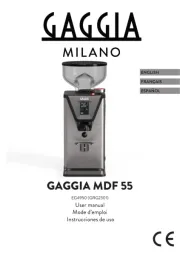
30 Juli 2025
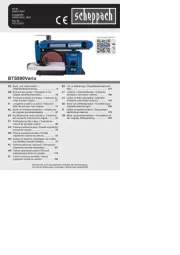
29 Juli 2025
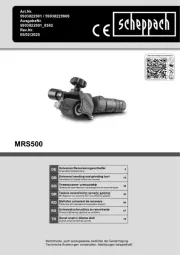
29 Juli 2025
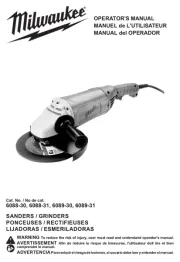
16 Juli 2025
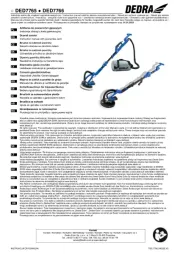
15 Juli 2025
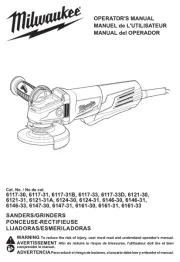
15 Juli 2025
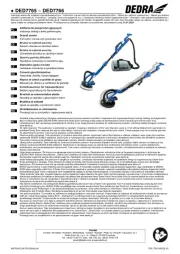
15 Juli 2025
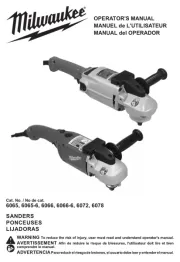
15 Juli 2025
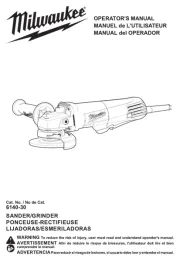
15 Juli 2025
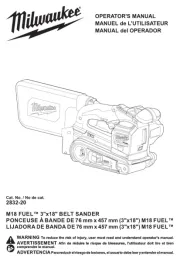
15 Juli 2025